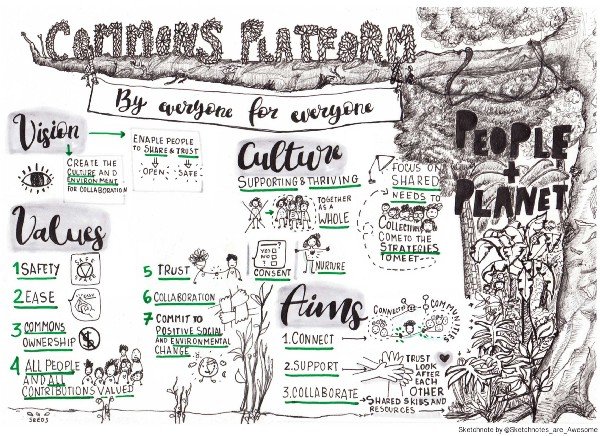Leadership and Influence Part 2 Intelligenthq
When we are talking about Influence and Leadership, there are some theories that might be helpful to assist you to improve your behaviour as a Leader. In the second part of this article, I would like to introduce you to one of them such as the Situational Leadership.
“Leadership is an attempt to Influence.” Dr. Paul Hersey
Situational Leadership was a theory created by Dr. Paul Hersey, a behavioural scientist and entrepreneur, author of ” The Situational Leader” and K. Blanchard, author of ” One-Minute Manager”. When proceeding to extensive research concerning the field of Leadership, these authors discovered that there is no single leadership style. This fact led them to propose the “Situational Leadership Theory”. The theory´s main argument is that successful leaders should adapt their style to specific situation considering the maturity of the people they are leading and the details of the task. The main components in the situational leadership theory are :
- Tasks
- Socio-emotional relationship between leader and employee.
The latter evokes the idea of “influence” that directly affects the employee performance. The more mature is the employee performing the task, the less should be involvement of the leader in the task of control. On the contrary, the leader should rather focus on socio-emotional relationships with employees.
As per Centre for Leadership Studies, there are four critical competencies that situational leaders need to demonstrate:
- Diagnose: “Understand the situation they are trying to influence”
- Adapt: “Adjust their behaviour in response to the contingencies of the situation”
- Communicate: “Interact with others in a manner they can understand and accept”
- Advance: “Manage the movement”
Hersey-Blanchard model of situational leadership proposes that depending on what’s needed to get the job done successfully, one should decided weather to put less emphasis on the task, or more/less emphasis on the relationships with the people being lead.
Overall there are four main leadership styles:
- Telling or Directing (S1)
- Selling or coaching (S2)
- Participating (S3)
- Delegating (S4)
Four Leadership styles. Image source:
You probably noticed already that the last two leadership styles are more concerned with socio-emotional relationships rather than with control of a task, what in turn is the focus of ‘telling’ and ‘selling’ leadership styles. Also, in terms of ‘team/employee maturity’ it is obvious that ‘participating’ and ‘delegating’ leadership styles are more applicable for mature teams while ‘ telling’ and ‘selling’ for junior level employees.
In addition, ‘telling’ and ‘selling’ correlate more with pure management rather than ‘leadership’.
“Management is about arranging and telling. Leadership is about nurturing and enhancing”. Tom Peters
Having said that, there is no unique leadership style, we still came back to four main types. However, we need to understand that when we lead using one or another type, we need to keep alert to the development of subordinates, teams, employees. Nothing is stable, every environment we live in, work, home, hobbies – all of them are very dynamic. This perpetual rhythm stipulates/affects the career development of employees, difficulties of tasks, influx of new workforce and aging of the old one.
Thus, we need to tailor our style of leadership as well, i.e. to move from ‘telling’ to ‘selling’ to ‘participating’ to ‘delegating’. Or we need to start by choosing one type of the chain considering the team’s experience and the task´s degree of difficulty.
There are four main types of maturity:
- M1 – people lack the knowledge, skills or confidence and they need to be pushed
- M2- followers might be willing to work on the task, but still don’t have the skills
- M3 – followers are ready and willing to help and have more skills than in the previous group. However, they still don’t have enough confidence
- M4 – followers are ready to work independently, have high level of confidence, the proper skills and are committed to the task.
I would say that for a true leader it is important to guide and to contribute to the development of the team. His goal should be to inspire, nurture and encourage employee development, ensuring that each employee is happy with his work, environment and leading guidance; to ensure that his contribution is significant, and his needs and interests correlate with the company goals and culture, i.e. he ‘fits’ perfectly to his mission and the company ‘fits’ perfectly to his career/life needs.
Leadership and Influence Part 2 Intelligenthq
Moreover, as mentioned by Peter Drucker a leader should: “.. build personality beyond its normal limitations”.
“ The growth and development of people is the highest calling of leadership“ Harvey Firestone.
This is the point where every employee will reveal his potential and it is the leader’s task to ensure that. For that, situational leadership teaches us to be alert and keep a track on the employee development, in order to apply the right leadership style or to guidance from ‘telling and selling’ to ‘participating and delegating’. A true Leader empowers others and nurtures new Leaders.
Leadership and Influence (part 1)

Fidan Aliyeva is a VP of R&D for ztudium. She is specialised in leadership, strategy, Innovation, People Management, behavioural economics, digital transformation. She writes for intelligenthq.com, openbusinesscouncil.org and hedgethink.com. Fidan Aliyeva’s background experience is in senior level leadership, project management, having coordinated operations for ztudium holdings and its multiple platforms and projects since 2011. With a career background in international Energy, Oil and Gas industry, Fidan has been working with big energy Multinationals close to CEOs and Boards project managing global projects. Fidan has an MBA in Oil and Gas Management from the University of Dundee, Scotland. In the last years she has been working, researching and writing about micro and macro trends in business, energy, oil and gas industries. She has a passion for leadership, strategy, geopolitical, environmental, tech and other global regulatory concerns with interest in behavioural psychology. Her current study involves EnioStyle – brand new socio-cultural theory on informational metabolism, psyche-typing, energy-informational exchange between people and nature based on analytical psychology, neuro-linguistic programming, transactional analysis and socionics. Application of EnioStyle to business challenges as a decision-making technique – is her new frontier for exploration.


























